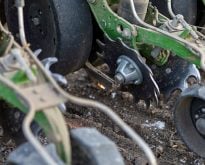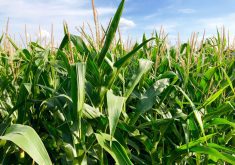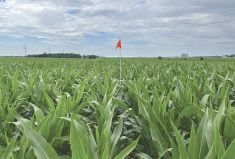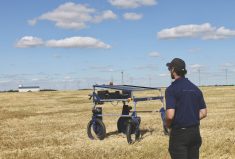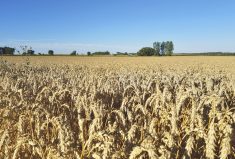Seriously? Can it really be better to till up and down some slopes instead of across?
That’s one of the conclusions from early work with precision agriculture in Australia, where the technology is proving a boon for field crop productivity.
It turns out that older technologies have blinded us to much of what’s really going on in our fields.
It also means, says Australian precision agriculture consultant Tim Neale, that while Australian farmers have notched some big gains in managing different soil types with no till and with controlled-traffic farming, there are a number of critical issues to overcome, including soil erosion, waterlogging, soil acidification and various man-made challenges.
Read Also

Sensing the soil: Root cell research finds ‘stress hormone’
Research into how root cells react to soil stressors could help plants better adapt to changes in their climate.
- More Country Guide: Humanity must stop treating soil like dirt
On these issues and many others, precision farming will be part of the solution, Neale believes, although not always in the way farmers might think.
Neale, who runs PrecisionAgriculture.com.au, points out to some relatively inexpensive and simple changes for dealing with water drainage issues. In one example he cited, a farmer adding a couple strategic subsurface drains was well rewarded.
“His numbers showed that he made $100,000 in two years from doing that change and it was about a $5,000 drain,” Neale said.
Soil acidity is another hurdle for Australian farmers, but instead of just blanketing fields with lime, Neale said variable-rate lime applications have proven to save massive amounts of lime simply by taking advantage of grid-based in-field pH sampling.
Variable-rate nutrients have also been shown to be big production boosters and cost savers.
In a field test of a variable field with good and poor soils, chicken litter was spread on one side with both types of soils and none on the other. A small rate of chicken litter was applied — only two tonnes per hectare — but the results were tremendous.
“When we ran the yield monitor over this, the yield in the poor soils actually matched the yield of good soils,” said Neale. “That is extremely exciting, because we’re actually at a point now where we can reduce the variability of that field considerably just by adding manures strategically to these poor areas.”
But one-size-fits-all solutions won’t provide the same results and may even be wasted, given that all fields are variable.
“Everyone wants to start precision agriculture with variable rate. I think that’s the last thing you want to do,” said Neale, who urged producers first to understand their farm’s issues and think of ways in which to alleviate them. “In some cases, it might be a soil-depth issue, so putting more nutrients on is a complete waste of time.”
- From the Grainews website: Precision ag on Blackstrap farm
The sleeping giant that farmers face, however, is the person in the mirror. Are farmers creating their own problems?
Said Neale: “We see all the time in satellite imagery and yield maps these things that people are doing during their normal activities in the field that are causing huge variability… That contributes significantly to the variability of cropping systems.”
Neale cited the example of poor fertilizer distribution that was costing the farmer in question $80 an acre. Fortunately, man-made mistakes are often the easiest and cheapest to solve.
“Man-made problems represent a large portion of where we see losses,” said Neale. “But it’s much easier to fix a problem with something you stuffed than fixing up a whole soil type.”
This article first appeared in the Special Section on Sustainability in the July 2014 issue of Country Guide




